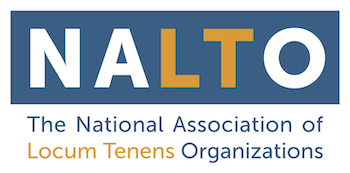Depending on how long you have been out of training, your curriculum vitae (Latin, meaning "course of life," CV for short) may fit onto one page or have the heft of a small book. Either way, it is important to keep this record of your education, training, experience, and professional accomplishments up to date.
Physicians often have questions about what to include and what to leave off their CVs. Here are tips to help ensure that your CV makes a positive impression when you are seeking locum tenens engagements.
The three most critical pieces of information listed first in your CV should include your contact information, education and training history, and practice experience.
Contact information. Your CV should lead with your full name followed by your degree (MD, DO) and relevant credentials such as FACP, FACOG, or FAAP. Include your mailing address, e-mail address, and the best phone numbers to reach you during the day and in the evening.
Education and training. In chronological order with the most recent training first, list fellowship and residency training, medical school, and college (include degree and major). Provide the name of the institution, location (city and state), and dates attended. Do not include your high school information.
Practice experience. Again, with your most recent practice experience first, sequentially list every job you have held, even those that were temporary. Give the name of the medical facility, the location, and the dates you were there.
The precise order of the next series of items is less critical, but they should appear in an orderly fashion on your CV. These include: states in which you hold an active medical license, certifications (specialty boards, plus ACLS, PALS, etc.), memberships in medical organizations, honors, awards, professional achievements, foreign languages in which you are conversant or fluent (specify which), and clinical skills that may be uncommon to your specialty.
At the end of your CV, list your publications, research, and presentations. If you have many published works, note the most impressive and/or recent ones and write "Partial list; full list available on request." An exception to this rule would be if your locum tenens recruiter presents your CV to academic institutions. In that case, the more published listings, the better.
An experienced physician recruiter will carefully examine your CV for gaps in training or practice experience. If you have taken more than 30 days off during your career, provide an explanation. Examples include: July–September, 2004: Vacation and time off to study for boards; October, 2006–January, 2008: Time off to care for family.
With the above information formatted properly on your CV (font large enough to read, no typos, clean margins) you will make a good first impression. But that is not the end of the story. What you exclude from your CV is almost as important as what you include.
Because your CV is a professional document, do not offer too much personal information. There is no need to mention your marital status (although you can if you would like) or the names and ages of your children. Leave off references to religious or political affiliations and do not list your hobbies. And even if you are exceptionally handsome or beautiful, resist the urge to include your headshot.
Protect your privacy by leaving out your license numbers, as well as your DEA number, social security or tax ID number, and date of birth. When you submit your CV to a locum tenens agency, staff will likely forward it to multiple medical facilities for consideration; your information will ultimately pass through the hands of dozens of people.
Occasionally, physicians open their CV with an objective—something like: Seeking a temporary practice opportunity with a radiology group. This is not necessary. If you are a radiologist submitting your CV to a locum tenens recruiter, it is assumed you are seeking a temporary practice opportunity in your specialty.
As a locum tenens practitioner, you will likely be updating your CV frequently. To enhance your marketability, after you make changes, always send the new version of your CV to each of the NALTO agencies with which you are registered.
Views and opinions expressed herein are those of NALTO and not necessarily those of Advanstar Communications Inc. or LocumLife.
About the Author
Karen Childress is a Colorado-based freelance healthcare writer currently crafting a series of articles on behalf of NALTO.
